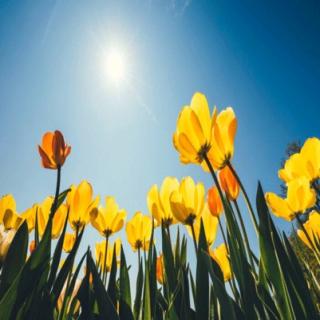
介绍:
Spring begins with the vernal equinox, the day when the Sun passes directly over the earth's equator. This means night and day are almost equal. It signifies the beginning of spring for the northern hemisphere and fall for the southern hemisphere.
Mostly we measure the spring by the change in the weather, as the cold of winter melts away to the wet warmth of spring, and flowers bloom and birds chirp and tax forms are due.
Inside of a flower’s DNA is a gene that tells it when it's OK to bloom and as winter progresses that gene just shuts off. Then once spring arrives that anti-blooming gene is disabled but the flowers still can't bloom too early because if a late frost happens, it could kill the little guy.
From here it relies on the amount of sunlight it receives in a given day. Too little and it's not passed the vernal equinox, so it sits and it waits. Post-equinox, another set of genes fires up and tells the flower to bloom and flowers and plants spring forth.
春天从春分开始,也就是太阳直接穿过地球赤道的那一天。这意味着白天和黑夜几乎一样长。它象征着北半球春天和南半球的秋天的开始。
大多数情况下,我们是通过天气的变化来衡量春天的,因为冬天的寒冷散去,春天的潮湿温暖到来了,花儿盛开,鸟儿啁啾鸣叫,税收表单也到期了。
花的DNA里面有一个基因,它告诉花什么时候可以绽放,随着冬天的到来,这个基因就会关闭。春天一到,这种防止开花的基因就失效了,但花还是不能开得太早,因为如果晚霜降临,它可能会杀死这个小家伙的。
从这里开始,花朵依赖于它在一天中所接收到的太阳光的总量。太少了,还没有过春分,所以它静静等待。春分过后,另一组基因启动,告诉花儿要开花了,草叶冒芽了。
大家还在听

